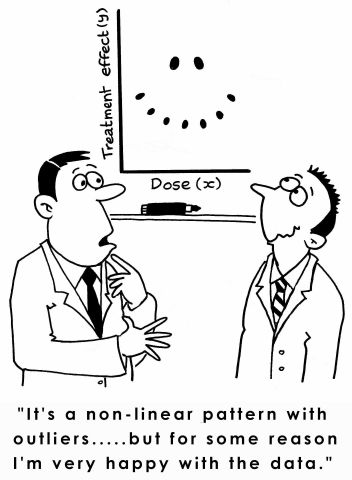Fill in Blanks
Home
1.1 Bivariate Relationships
1.2 Probabilistic Models
1.3 Estimation of the Line
1.4 Properties of the Least Squares Estimators
1.5 Estimation of the Variance
2.1 The Normal Errors Model
2.2 Inferences for the Slope
2.3 Inferences for the Intercept
2.4 Correlation and Coefficient of Determination
2.5 Estimating the Mean Response
2.6 Predicting the Response
3.1 Residual Diagnostics
3.2 The Linearity Assumption
3.3 Homogeneity of Variance
3.4 Checking for Outliers
3.5 Correlated Error Terms
3.6 Normality of the Residuals
4.1 More Than One Predictor Variable
4.2 Estimating the Multiple Regression Model
4.3 A Primer on Matrices
4.4 The Regression Model in Matrix Terms
4.5 Least Squares and Inferences Using Matrices
4.6 ANOVA and Adjusted Coefficient of Determination
4.7 Estimation and Prediction of the Response
5.1 Multicollinearity and Its Effects
5.2 Adding a Predictor Variable
5.3 Outliers and Influential Cases
5.4 Residual Diagnostics
5.5 Remedial Measures
4.2 Estimating the Multiple Regression Model
As we did in the simple linear regression case in Section 1.3.2, we want to fit model (4.1)
The fitted line in the multiple regression case is $$ \hat{Y}_i = b_0 + b_1 X_{i1} + b_2 X_{i2}+\cdots +b_{p-1}X_{i,p-1}\qquad\qquad(4.2) $$ The estimates $b_0,b_1,\ldots,b_{p-1}$ are found by minimizing thesquared distances between the observed values $Y_i$ and the fitted values $\hat{Y}_i$. The sum of the squared distances in (1.2)
Note that model (4.1)plane when $p=3$ and a hyperplane when $p>3$.
\begin{align*}
Y_{i}= & \beta_{0}+\sum_{k=1}^{p-1}\beta_{k}X_{ik}+\varepsilon_{i}\\
& \varepsilon\overset{iid}{\sim}N\left(0,\sigma^{2}\right)\qquad\qquad\qquad(4.1)
\end{align*}
to the observed data.
The fitted line in the multiple regression case is $$ \hat{Y}_i = b_0 + b_1 X_{i1} + b_2 X_{i2}+\cdots +b_{p-1}X_{i,p-1}\qquad\qquad(4.2) $$ The estimates $b_0,b_1,\ldots,b_{p-1}$ are found by minimizing the
\begin{align*}
$$
Q=\sum \left(Y_i-\left(b_0+b_1 X_i\right)\right)^2 \qquad\qquad\qquad (1.2)
$$
for the simple regression case is now
$$
Q=\sum \left(Y_i-\left(b_0 + b_1 X_{i1} + b_2 X_{i2}+\cdots +b_{p-1}X_{i,p-1}\right)\right)^2 \qquad (4.3)
$$
in the multiple regression case.
Note that model (4.1)
\begin{align*}
Y_{i}= & \beta_{0}+\sum_{k=1}^{p-1}\beta_{k}X_{ik}+\varepsilon_{i}\\
& \varepsilon\overset{iid}{\sim}N\left(0,\sigma^{2}\right)\qquad\qquad\qquad(4.1)
\end{align*}
is no longer a line. It is a
When there are two predictor variables ($p=3$), we will take three partial derivatives of (4.3) with respect to $b_0$, $b_1$, and $b-2$. This leads us to
\begin{align*}
\frac{\partial Q}{\partial b_{0}} & =-2\sum\left(Y_{i}-b_{0}-b_{1}X_{i1}-bX_{2i}\right)\\
\frac{\partial Q}{\partial b_{1}} & =-2\sum X_{i1}\left(Y_{i}-b_{0}-b_{1}X_{i1}-bX_{2i}\right)\qquad(4.4)\\
\frac{\partial Q}{\partial b_{2}} & =-2\sum X_{i2}\left(Y_{i}-b_{0}-b_{1}X_{i1}-bX_{2i}\right)
\end{align*}
Setting the partial derivative equal to zero and rearranging the terms lead us to the normal equations
\begin{align*}
\sum Y_{i} & =nb_{0}\sum X_{i1}+b_{2}\sum X_{i2}\\
\sum X_{i1}Y_{i} & =b_{0}\sum X_{i1}+b_{1}\sum X_{i1}^{2}+b_{2}\sum X_{i1}X_{i2}\qquad(4.5)\\
\sum X_{i2}Y_{i} & =b_{0}\sum X_{i2}+b_{1}\sum X_{i1}X_{i2}+b_{2}\sum X_{i2}^{2}
\end{align*}
Solving the normal equations for $b_0$, $b_1$, and $b_2$ gives use the least squares estimators
\begin{align*}
b_{1} & =\frac{\left(\sum X_{i2}^{2}\right)\left(\sum X_{i1}Y_{i}\right)-\left(\sum X_{i1}X_{i2}\right)\left(\sum X_{i2}Y_{i}\right)}{\left(\sum X_{i1}^{2}\right)\left(\sum X_{i2}^{2}\right)-\left(\sum X_{i1}X_{i2}\right)^{2}}\\
b_{2} & =\frac{\left(\sum X_{i1}^{2}\right)\left(\sum X_{i2}Y_{i}\right)-\left(\sum X_{i1}X_{i2}\right)\left(\sum X_{i1}Y_{i}\right)}{\left(\sum X_{i1}^{2}\right)\left(\sum X_{i2}^{2}\right)-\left(\sum X_{i1}X_{i2}\right)^{2}}\qquad(4.6)\\
b_{0} & =\bar{Y}-b_{1}\bar{X}_{1}-b_{2}\bar{X}_{2}
\end{align*}
We see that the expression for the least squares estimators become cumbersome even for $p=3$. As more variables are added to the model, the equations become even more cumbersome.
We can simplify notation by utilizingmatrices to represent the model. We will present some basic notation and operations for matrices in the next section and then present the model using matrices in Section 4.4.
We can simplify notation by utilizing
